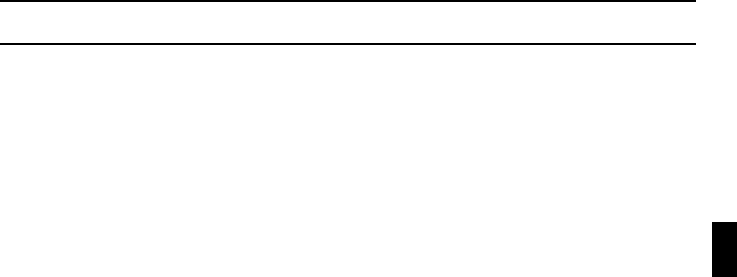
CONCERNING IMAGE AND AUDIO DATA STORAGE
Saving the Images Captured with Your Digital Camera
œ Saving the images to a computer
Requires: Computer connecting cable (supplied), commercially available personal
computer.
Advantages: The images are saved as data on the computer hard disk. They can then be
processed or edited, sent over a network or the Internet, etc.
œ Print out in high quality with a digital print service
For high-quality print outs of your captured images, you can take your image data to digital
print service centers for digital cameras (see page 113). Network print services are also
available for access if necessary.
Advantages: You can receive high-quality printouts of the images you capture.
Caution: To print out a single shot from a sequential shot or a single scene from a video
clip, you must first copy the data as a still image (see page 112).
If the image resolution is low, depending on the print size, the output image may
not be high quality.
Data File Formats
The format of the files saved on the card and the method in which the file names are determined
are explained below.
Still image data
Data format: JPEG or TIFF format (Design rule for Camera File system compliant)
File name structure: SANYoooo.jpg or SANYoooo.tif
The “oooo” represents a sequential number assigned automatically.
Voice memo data
Data format: WAVE format
File name structure: SANYoooo.wav
The “oooo” represents the same sequential number as the image file
to which the sound memo corresponds.
Sequential shots data
Data format: JPEG format
File name structure: SEQTxxyy.jpg
The “xx” represents the folder number where the sequential shots are
stored. The “yy” represents a sequential number assigned
automatically.
SX114/EX, /E, /U (VPC-SX560EX, VPC-SX560E, VPC-SX560 GB) Wed. Nov., 15/2000
English 48


















